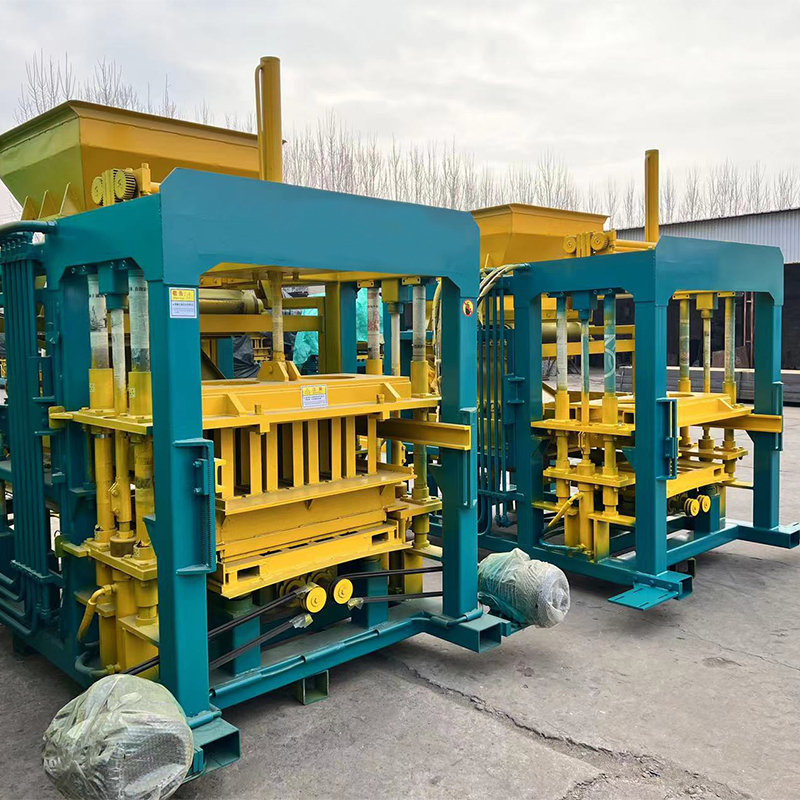
Image source :Aiweiblockmachine
The Role of Block Machinery in Modern Construction
The construction industry stands as a testament to human ingenuity and progress. Central to its advancements is the power of block machinery, a vital force driving construction into the future. From the early days of manual brickmaking to today’s highly automated and sustainable block machinery, this article explores the remarkable journey of block machinery and its transformative role in modern construction practices.
I. Introduction
Block machinery is the backbone of the construction industry, responsible for shaping the building blocks of our world. It encompasses a diverse range of equipment and technologies designed to produce bricks, concrete blocks, and other construction materials. Understanding its evolution and significance is essential to appreciating its power in contemporary construction.
II. The Historical Context
To grasp the full impact of block machinery in construction, it’s essential to delve into its historical context.
1. Manual Labor in Early Construction
Historically, construction materials were crafted by hand. Laborers manually molded bricks, carved stones, and shaped other building materials. This labor-intensive process resulted in irregular shapes and sizes, limiting construction possibilities.
2. The Industrial Revolution
The Industrial Revolution brought about a paradigm shift in construction. Machinery and automation began replacing manual labor, significantly increasing production rates and standardizing material quality.
3. Emergence of Block Machinery
The late 19th century saw the development of specialized block machinery, capable of producing uniform, high-quality concrete blocks and bricks. Hydraulic presses became instrumental in this transformation, setting the stage for modern block machinery.
III. The Modern Role of Block Machinery
In today’s construction landscape, the power of block machinery is evident in several key aspects:
1. Precision and Consistency
Modern block machinery ensures the production of precise and consistent building blocks. This consistency is critical for structural integrity, enhancing the durability of constructed buildings.
2. Diverse Range of Building Blocks
Block machinery offers versatility by producing a wide array of building blocks, including standard concrete blocks, hollow core blocks, interlocking blocks, and specialized shapes tailored to unique construction needs.
3. Sustainability
Block machinery has adapted to embrace sustainability. The incorporation of recycled materials, fly ash, slag, and other eco-friendly practices significantly reduces environmental impact.
4. Automation and Efficiency
Automation has revolutionized block machinery, leading to high-speed block-making machines, robotic handling systems, and computer-controlled processes. These innovations increase production rates and reduce labor costs.
5. Design Flexibility
Modern block machinery integrates computer-aided design (CAD) and 3D printing technologies, allowing architects and builders to create intricate and customized block patterns, elevating the aesthetic appeal of structures.
6. Sustainable Energy Solutions
In response to energy efficiency concerns, block machinery explores sustainable energy sources, such as solar-powered machines and waste heat recovery systems, contributing to reduced energy consumption and a smaller environmental footprint.
IV. The Sustainable Revolution
Sustainability has become a driving force in contemporary construction, with block machinery at its forefront.
1. Energy Efficiency
The integration of energy-efficient features, like variable frequency drives and optimized processes, reduces energy consumption during block production.
2. Waste Reduction
Block machinery minimizes waste by enabling the use of recycled materials and generating less waste during production.
3. Carbon Neutrality
Innovations like carbon capture technology are explored, allowing blocks to absorb carbon dioxide over time, contributing to carbon-neutral construction practices.
V. Digital Integration
Block machinery is increasingly becoming part of the digital revolution in construction.
1. Internet of Things (IoT)
IoT technology is integrated into block machinery, enabling real-time monitoring and optimization. Sensors collect data on machine performance and maintenance needs, improving efficiency and reducing downtime.
2. Big Data and Analytics
Advanced data analytics tools process the substantial amount of data generated by block machinery, providing insights that optimize production, reduce downtime, and enhance quality control.
3. Remote Monitoring
Operators and maintenance teams can remotely monitor block machinery, allowing for proactive maintenance and troubleshooting, further reducing downtime and improving efficiency.
VI. The Future of Block Machinery
As construction continues to evolve, the power of block machinery stands poised for further transformation.
1. Nanotechnology
Exploration of nanomaterials for creating stronger and more durable block materials holds the promise of extending the lifespan of structures.
2. 3D Printing
3D printing technology is revolutionizing block production, enabling customized, on-site production of building blocks and intricate architectural elements.
VII. Conclusion
The power of block machinery in construction is a testament to human innovation and adaptability. From labor-intensive beginnings to highly automated and sustainable processes, block machinery has consistently shaped the construction industry’s trajectory.
As the industry continues to evolve, the collaboration between builders, engineers, and technologists will drive further innovation, ensuring construction remains at the forefront of modernization. Block machinery has become synonymous with progress, empowering builders to create structures that stand as testaments to human achievement. The future of construction is brighter and more sustainable, thanks to the enduring power of block machinery.
